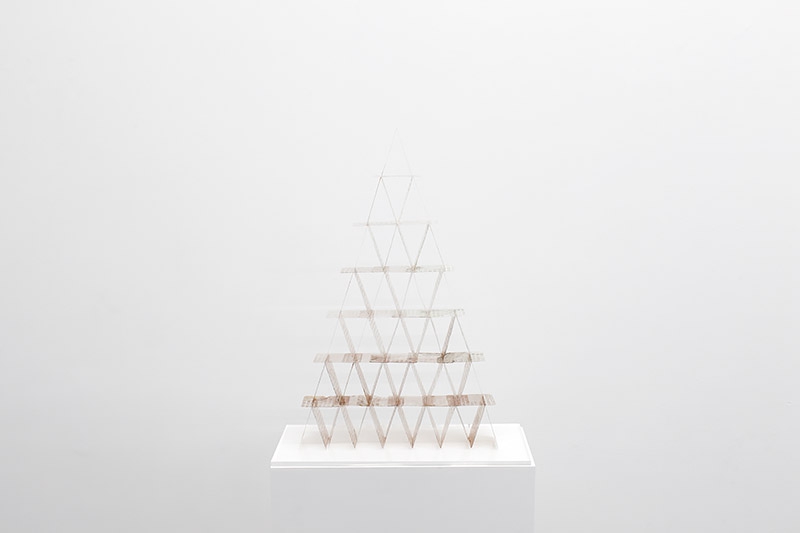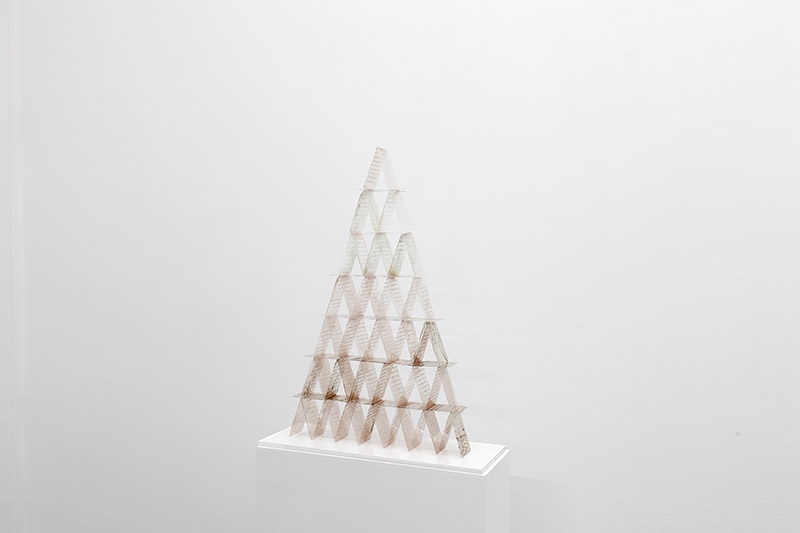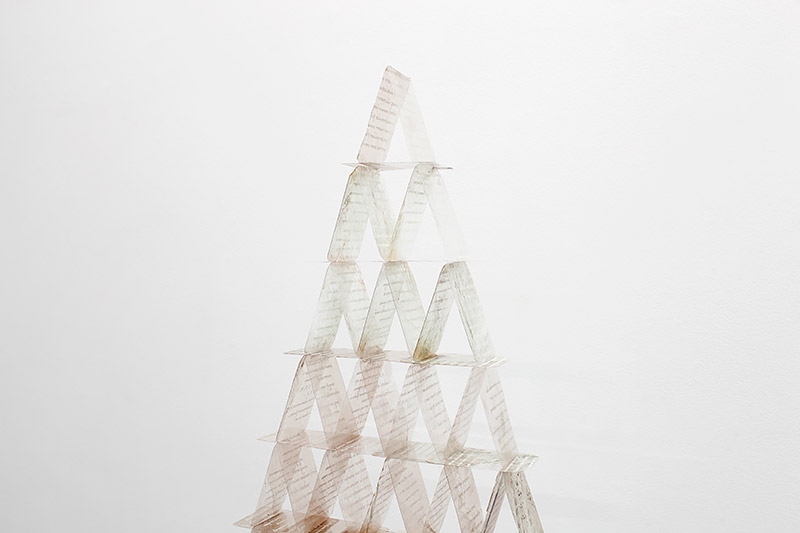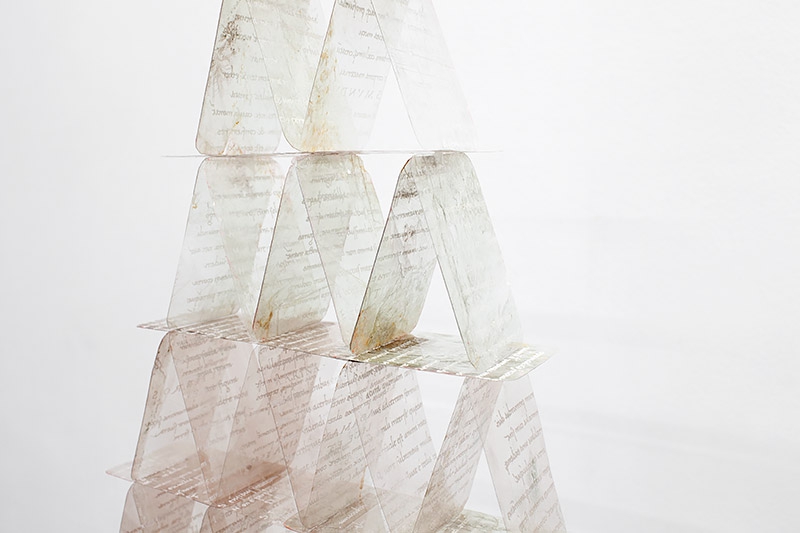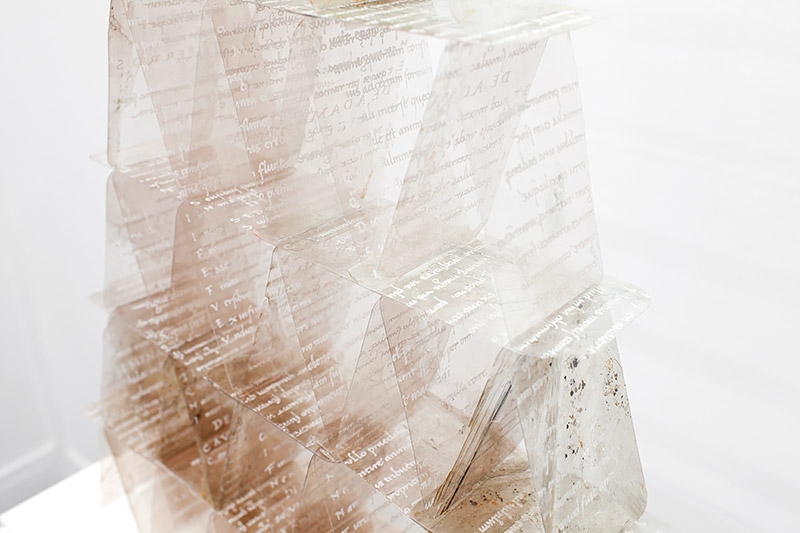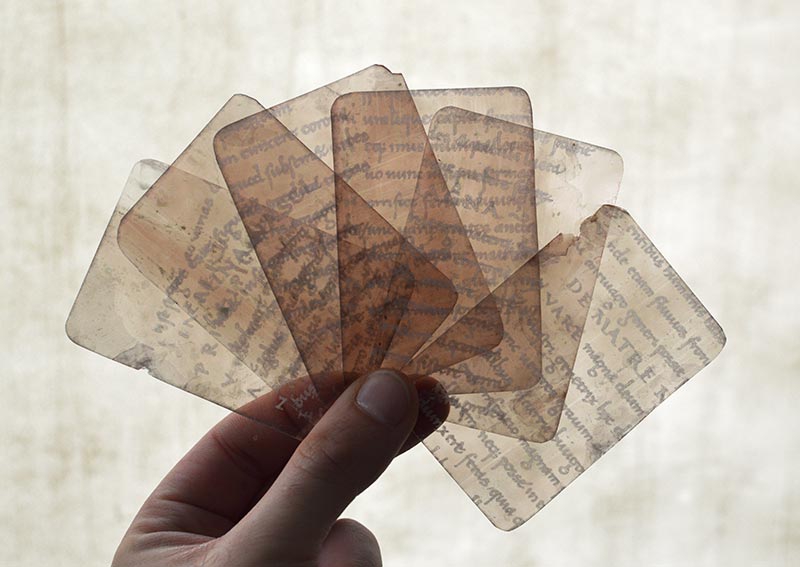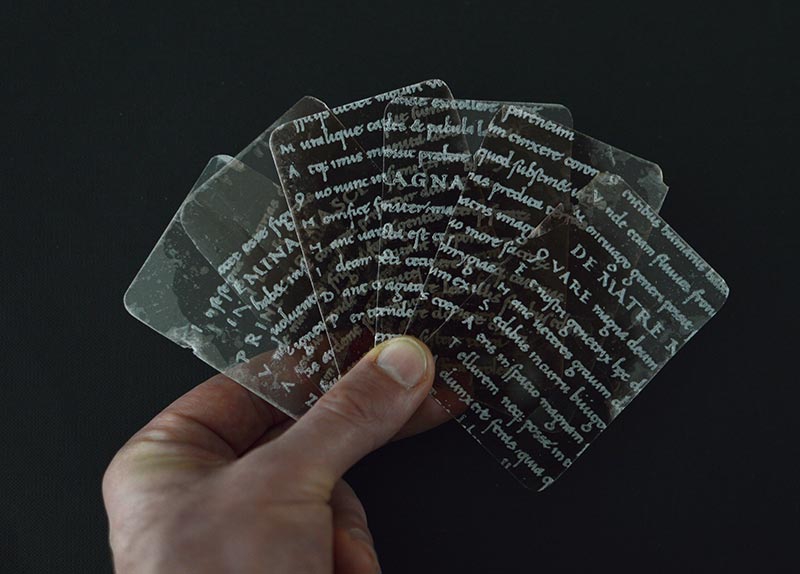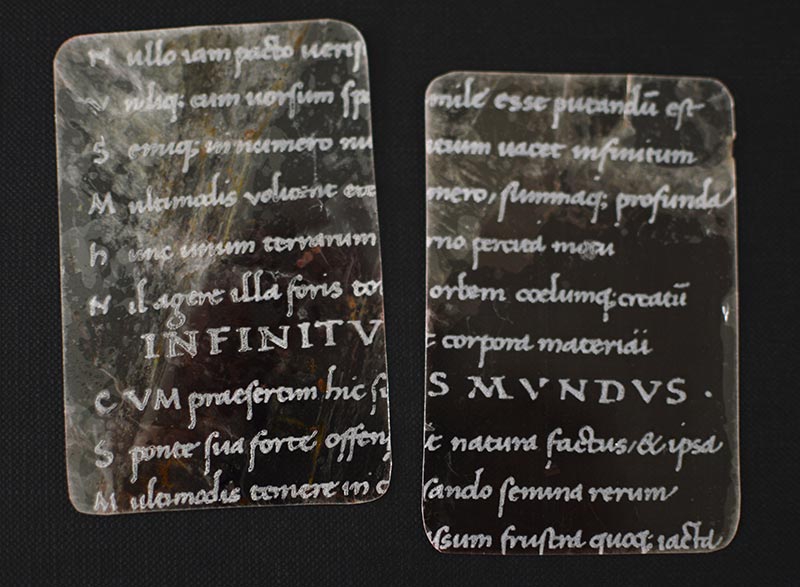By nature fashioned, even as seeds of things
By innate motion chanced to clash and cling,
After they'd been in many a manner driven
Together at random, without design, in vain,
And as at last those seeds together dwelt,
Which, when together of a sudden thrown,
Should alway furnish the commencements fit of mighty things
Lucretius, On the Nature of Things, II, 1059-1063
-

Blocks of mica (a sheet silicate mineral) have been delaminated, sheet by sheet, cut into playing-card format, and laser-engraved with a text written by a copyist from the 15th century. The 166 cards are stacked to form two castles and presented inside transparent boxes. In this piece, several keys (the text, the geometry of the cards, the mica) open the door to the same room.

The story begins in a German abbey in 1417, with the rediscovery of one of the most famous ancient Latin poems:
De Rerum Natura, by Lucretius, a disciple of Epicurus. Chapter II concerns the atomistic theory of the beginning of life on Earth, and a facsimile of this section has been inscribed upon the mica using a laser. The sheets of mica were then shuffled and used to construct houses of cards, following the same atomistic theory, which states that “after a thousand disordered movements and useless junctions,” atoms somehow fell into the configuration that allowed for life to come about. As for mica itself, it has recently been suggested that it was between two sheets of this mineral that the very first living cells appeared (Helen Hansma, “life between the sheets” hypothesis).
 Laser engraved mica sheets, steel, plexiglas
Laser engraved mica sheets, steel, plexiglas
66,4 x 45,6 x 16,4 cm
C'est spontanément, au hasard des rencontres,
après s'être assemblées de multiples façons,
au hasard et en vain, pour rien, que les semences
des choses ont fini, tout soudain, réunies,
par donner à tout coup naissance aux grandes choses
Lucrèce, De la nature des choses, II, 1059-1063
-

Des blocs de mica (minéral siliceux à la structure feuilletée) ont été déclivés feuille par feuille, découpés à un format de carte à jouer et gravés au laser d’un texte écrit par un copiste du XVe siècle. Les 166 cartes sont réunies en deux châteaux et présentés sous une protection transparente. Il y a ici plusieurs clés (le texte, la géométrie du château de cartes, le mica), ouvrant sur la même chambre.

L’histoire commence en 1417, avec la redécouverte dans une abbaye allemande de l’un des poèmes les plus fameux de l’Antiquité latine, le De Rerum Natura de Lucrèce, disciple d’Épicure. Le chapitre II qui traite de l’apparition de la vie sur Terre selon la théorie atomiste, est ici restitué dans son intégralité en fac-similé au laser sur les cartes de mica. Elles ont ensuite été mélangées et agencées en château –suivant ainsi cette même théorie, qui expose que les atomes «après mille mouvements désordonnés et tant de jonctions inutiles» ont finalement trouvé le bon assemblage qui aurait créé la vie.
Quant au mica, il est au centre d’une théorie actuelle qui postule que les premières cellules vivantes seraient apparues entre deux feuilles de ce minéral (Helen Hansma, «Life between the sheets hypothesis»).

Feuilles de mica gravées au laser, acier, plexiglas
66,4 x 45,6 x 16,4 cm
